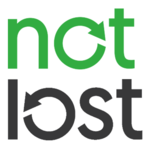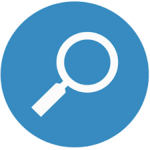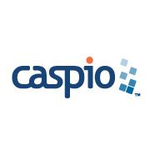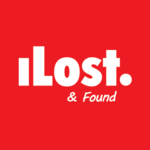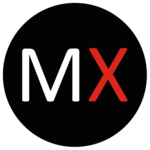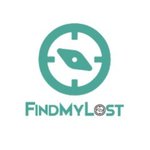Yes, lost and found software may be accessed from various devices and platforms. This software is often cloud-based, so users may access it from any device with an internet connection. It is also designed to run on multiple platforms, including Windows, Mac, iOS, and Android. This allows for seamless collaboration and communication among users, making it easier to trace and retrieve lost things regardless of the device or platform being used.
List of Best Lost And Found Software
IQware PMS, property management system designed to streamline booking, rate management, and front desk operations for various property types. With global recognition and seamless integration capabilities for over 600 systems, it is the top choice for...Read More IQware PMS
RepoApp - a user-friendly and cloud-based solution for streamlining lost and found item management. Perfect for various industries, it facilitates easy tracking of items and claims, enhancing overall customer satisfaction. With RepoApp, local hosting...Read More RepoApp
Chargerback is a lost and found platform designed to streamline the return process for misplaced items. It seamlessly integrates with airlines and hotels, making it the ideal solution for businesses in the hospitality, entertainment, travel, and tour...Read More Chargerback
ReclaimHub is a lost and found solution specifically designed for businesses. Our advanced software allows companies to effectively manage lost items, while also offering a convenient self-service option for individuals to report lost items by upload...Read More ReclaimHub
Lost Property Desk is the premier lost and found software utilized by businesses and government agencies throughout the UK. Our software offers a variety of convenient features, such as Cross-Database Search and efficient management of unclaimed item...Read More Lost Property Desk
Nova Find is a lost and found inventory software, trusted by both agencies and enterprises. Its robust features include efficient management of lost and found items, as well as inventory organization. With the ability to integrate with API, customiza...Read More Nova Find
NotLost solution for effectively managing lost and found items. Our innovative software simplifies the traditional lost and found process, reducing staff time by up to 80%. With efficient features for item repatriation, NotLost transforms the way los...Read More NotLost
Troov is a software that streamlines the process of managing lost and found items with its state-of-the-art matching algorithm, easy-to-use forms, and effective recovery capabilities. It is accessible on Cloud, SaaS, and Web platforms, allowing users...Read More Troov
Crowdfind solution for lost and found management. As a SaaS platform, our software streamlines the process of handling lost and found cases for companies. Our user-friendly app allows for capturing images and creating detailed descriptions of lost it...Read More Crowdfind
Lost and Found Manager is a web-based solution for individuals and businesses seeking to recover their lost belongings. Our innovative software uses cutting-edge image recognition technology to identify lost items based on features like brand, color,...Read More Lost and Found Software
Lost & Found: The premier lost item tracking software featuring cutting-edge matching and image recognition technology. No more wasted time and money searching for lost possessions - our streamlined management system makes retrieval a breeze. Our one...Read More Lost & Found
Caspio is a, low-code platform that empowers businesses to easily create custom cloud applications. With top-notch security, scalability, and 24/7 support, Caspio makes the development process seamless and freeing. Unleash your creativity without lim...Read More Caspio
iLost solution for finding lost possessions. Register your items on iSave and easily track them down with our efficient searching and shipping features. Our platform offers convenience and accessibility at all times. Say goodbye to lost items with iL...Read More iLost
MissingX for Business is a lost and found software designed to connect users with Lost & Found Property Offices globally. With a user-friendly interface, it streamlines the process of reuniting lost belongings with their rightful owners, eliminating...Read More MissingX For Business
FindMyLost - an innovative digital solution designed to connect lost and found items with their owners. Our platform utilizes advanced features to streamline the management of misplaced property for businesses, enhancing customer satisfaction by effo...Read More FindMyLost
Learn More About Lost And Found Software
- What Is Lost And Found Software?
- What Are The Recent Trends In Lost And Found Software?
- Benefits Of Using Lost And Found Software
- Important Factors To Consider While Purchasing Lost And Found Software?
- What Are The Key Features To Look For In Lost And Found Software?
- Why Do Businesses Need Lost And Found Software?
- How Much Time Is Required To Implement Lost And Found Software?
- What Is The Level Of Customization Available In Lost And Found Software?
- Which Industries Can Benefit The Most From Lost And Found Software?
- Conclusion
What Is Lost And Found Software?
Lost and Found Software is a form of technology that enables individuals and companies to efficiently handle lost and found things. This software streamlines the reporting, logging, and retrieval of lost objects by utilizing advanced capabilities such as scanning, tracking, and database administration. It is commonly used by corporations, schools, transportation companies, and other organizations that deal with a significant number of lost and found items.
One of the most notable benefits of Lost and Found Software is the ability to construct a centralized database for all lost and found objects. This allows users to simply search for and identify lost objects based on numerous factors such as date, category, and description. This database also provides quick and easy updates on the status of items, such as whether they have been claimed or returned.
Lost and Found Software also uses advanced scanning technologies, such as barcodes or QR codes, to quickly log and track lost and found objects. This reduces the need for manual data entry, which lowers the likelihood of human error. Some software even allows clients to self-scan their missing items, which speeds up the process and increases customer satisfaction.
Additionally, this software frequently includes a reporting tool, which allows users to generate thorough reports on lost and discovered objects. This information can be utilized to analyze and detect patterns, hence improving overall management of lost and found items. Another essential feature of Lost and Found Software is its integration capability. This software can be integrated with other systems, like as inventory management or customer relationship management, to improve overall operations and give a more consistent user experience.
What Are The Recent Trends In Lost And Found Software?
In recent years, the use of lost and found software has grown significantly across a wide range of businesses and organizations. This is mostly due to the fact that lost and found software provides a more efficient and simplified method of managing lost things, hence decreasing the strain on individuals and staff members responsible for processing lost and found items. Cloud-based solutions are becoming increasingly popular in lost and found software.
This implies that the program may be accessed from any internet-connected device, enabling real-time upgrades and data syncing. This enables firms to better track and manage lost assets, especially when they have several locations or branches. Another trend is the incorporation of mobile technology. Many lost and found software now include mobile applications that allow consumers to report lost things, follow their status, and receive notifications when their items are located.
This not only expedites the procedure for the user, but it also minimizes the workload of staff workers. AI is also being used in some lost and found software. This technology can assist in categorizing and arranging misplaced things, making it easier for workers to identify and reunite them with their owners. AI can also help identify patterns and trends, which can be useful for managing lost things in high-traffic locations like airports or public transportation.
RFID technology is becoming increasingly popular for security purposes. This includes attaching RFID tags to things, which can then be easily scanned and tracked by the software. This reduces the possibility of misplacing or losing materials within the organization. Finally, there is an emphasis on developing a user-friendly interface for lost and found software. This includes sophisticated search options, customisable forms, and an easier way to report and claim missing things. This makes it easier for staff and users to navigate and use the product efficiently.
Benefits Of Using Lost And Found Software
misplaced and found software is an invaluable resource for any organization or business trying to efficiently manage misplaced things. This program can help schools and universities, as well as airports and hotels, monitor and retrieve lost things more efficiently.
Here are some of the main advantages of using lost and found software.
1. Centralized Database: One of the most significant advantages of lost and found software is its capacity to generate a consolidated and structured database of all lost things. This eliminates the need for manual tracking systems, reducing the likelihood of objects being misplaced or lost even further. A robust database allows users to readily search for and recover vital information regarding missing items, making the entire process more efficient.
2. Streamlined Process: Paper forms and manually logging lost items are a thing of the past. Lost and found software automates the entire process, making it more effective and time-saving. With a few clicks, users may report a lost item, input relevant information, and even track its status. This streamlined method not only lowers errors, but it also assures that things are retrieved quickly and accurately.
3. Increased Client Satisfaction: Using lost-and-found software can dramatically increase customer satisfaction. Quick and effective handling of lost things benefits a business and creates a lasting impression on customers. Customers who can quickly locate and reclaim their goods are more inclined to trust and return to a company that cherishes their stuff and delivers exceptional customer service.
4. Cost-Effective: Investing in lost and found software might also help firms save money in the long term. This software can boost productivity by lowering the time and resources spent on manual tracking methods and streamlining the process, saving firms both time and money. This is especially useful in high-traffic environments like airports and amusement parks, where misplaced things may quickly become a serious problem.
5. Data & Analytics: Lost and found software also provides vital data and analytics to businesses. Businesses can receive insights into the most commonly lost items, as well as peak times and locations, through real-time tracking and reporting. This data can help firms make more educated decisions on how to enhance their lost and found process, resulting in a more efficient and successful system.
Important Factors To Consider While Purchasing Lost And Found Software?
When choosing lost and found software, there are several critical elements to consider to ensure that you get the best option for your requirements.
Here are some important factors to consider before making a purchase:
1. Compatibility: When acquiring software, the first thing you should evaluate is if it is compatible with your existing systems and platforms. Make that the software is compatible with your operating system, databases, and other required programs.
2. Features And Functionality: Look for software that includes a variety of features and functionality to fulfill your individual requirements. Some important features to look for are lost item tracking, offline and online reporting, automated notifications, and user-friendly interfaces.
3. Cloud-Based Or On-Premise: Determine whether you prefer a cloud-based or on-premise solution. Cloud-based software allows for remote access, whilst on-premise software provides greater control and protection.
4. Scalability: As your firm grows, you may need to deal with more lost and found products. As a result, it is critical to select software that can scale with your organization and handle a higher amount of things.
5. Customer Assistance: Select a software vendor that provides good customer assistance. In the event of a technical issue or inquiry, having a dependable support system in place will save you time and frustration.
6. Customization Options: Look for software that can be adjusted to meet your specific business requirements. This enables you to customize the program to integrate easily with your existing procedures and operations.
7. Security And Data Protection: Lost and found software will contain sensitive data, such as client personal information and lost item details. It is critical to select software that has strong security measures in place to safeguard sensitive data from unauthorized access.
8. Integration Capabilities: If you already use other software or systems for your organization, you should check to see if the lost and found software can interact with them. This will result in a smooth and efficient workflow across different programs.
9. User-Friendly Interface: The program should have an easy-to-use interface for both employees and customers. Complex and confusing interfaces can cause errors and inefficiencies in the lost-and-found process.
10. Cost: Finally, think about how much the software costs and how much value it provides. Make sure to evaluate the prices and features of several software solutions before making a decision. When choosing lost and found software, consider these considerations to make an informed purchase that best meets your business needs.
What Are The Key Features To Look For In Lost And Found Software?
When looking for Lost And Found Software, there are a few key aspects to consider to guarantee you make a wise decision.
The following are the important qualities to look for in Lost And Found Software.
1. User-Friendly Interface: The program should be simple to access and operate, with a well-organized layout. This will allow users of all ability levels to easily understand and operate the software efficiently.
2. Comprehensive Search Functionality: The major goal of missing And Found Software is to assist in locating and retrieving missing things. As a result, the program should provide a robust search engine that allows users to look for objects based on a variety of parameters such as date, location, description, and more.
3. Multi-Platform Compatibility: Since people use a variety of devices and operating systems, it is critical to select software that is cross-platform compatible. This ensures that users may access and utilize the program on their preferred devices.
4. Real-Time Updates: It can be annoying to search for an item only to discover that it has already been found and returned. Look for Lost And Found Software that provides real-time updates, allowing users to view the most recent information about found goods.
5. Automated Messages: To increase the odds of locating lost goods, the software should include a feature that sends automated messages to the owner when the item is located.
6. Data Protection: Because customers may be inputting sensitive information into the software, it is critical to select a product that emphasizes data protection. Look for features like encrypted data storage and password protection to keep user information secure.
7. Reporting And Analysis: A decent Lost And recovered Software should include built-in reporting and analytics features that provide useful information on the amount of goods recovered, lost, and returned. This information can help businesses and organizations improve their lost and found practices. When looking for Lost And Found Software, keep these crucial aspects in mind to ensure you make an informed purchase that suits your needs and allows you to properly handle lost and found things.
Why Do Businesses Need Lost And Found Software?
Lost and found software is a valuable tool for organizations of all kinds since it simplifies the process of managing and categorizing lost things. Lost and found software may substantially assist any business, whether it is a little retail store, a major hotel, or a busy airport.
Here's why your company should invest in reliable lost and found software:
1. Effective And Organized: Management of Lost Items Lost and found software logs all lost things into a central system, making them easier to handle and trace. This reduces the need for manual paper-based systems, which are typically inaccurate and time-consuming. The software's user-friendly interface makes tracking and retrieving lost things a quick and easy process.
2. Saves Time And Resources: Manual tracking and management of lost things might be difficult for firms that deal with a high volume of them. This can lead to a waste of time and resources in trying to find the legitimate owners. Lost and found software automates the process, allowing for more efficient tracking and retrieval, saving your company time and resources.
3. Improves Customer Satisfaction: misplaced and found software improves the entire customer experience by providing a streamlined method for reclaiming misplaced things. Customers may quickly report and trace their lost products using the software, which fosters trust and happiness. This can also help increase your company's reputation and consumer loyalty.
4. Customizable And Scalable: Lost and found software can be customized to meet the specific demands of your organization. It may be used in a variety of industries, including retail outlets and airlines, making it an adaptable solution for enterprises of all sizes. As your organization grows, the program can be readily adjusted to accommodate the increased number of lost products.
5. Data & Analytics: Lost and found software offers useful information and analytics to assist your company find patterns and areas for development. This information can be utilized to improve your lost and found procedures, making them more efficient and successful.
How Much Time Is Required To Implement Lost And Found Software?
The time required to implement Lost & Found software varies based on several factors, including the organization's size, the level of customization necessary, and the software's functionality. On average, the implementation procedure can last from a few weeks to a few months. The first step is to assess your organization's demands and choose the software that best fulfills them. This can take a few days or even weeks, depending on the decision-making process.
After you've decided on the program, the following step is to install and configure it to meet the demands of your firm. This includes creating user accounts, migrating data, and configuring the software to reflect your brand. This procedure may take several weeks, depending on the complexity of your organization's data and the level of customization necessary. Once the software is installed, it is critical to train your employees on how to utilize it efficiently.
This could take a few days or weeks, depending on the size of your team and their experience with similar software. To reap the most benefits from the program, you must ensure that your employees are comfortable using it. Finally, the implementation phase entails testing and improving the system to guarantee that it works properly before full adoption. This procedure might take many weeks to ensure that all areas of the software function properly and that any problems or malfunctions are resolved.
What Is The Level Of Customization Available In Lost And Found Software?
The level of customisation available in lost and found software is an important consideration to consider when selecting the best option for your requirements. Depending on your individual needs and operations, being able to adjust some features and functions can significantly improve the software's efficiency and effectiveness. Many lost and found software systems include varying levels of customisation, ranging from simple to extensive features.
Branding, user interface, access control, and reporting are some of the most common areas that can be customized. Branding customisation allows you to personalize the software with your organization's logo and colors, resulting in a more uniform and professional appearance. The user interface customization feature allows you to adjust the software's layout and design to your individual workflow and preferences.
This can include establishing custom fields, labels, and categories to organize items in the most efficient manner for your business. Access control customization allows you to set multiple levels of access for different users, ensuring that only authorized staff have access to sensitive data or functions. This is especially effective in larger organizations with several departments or levels of workers.
Reporting customization allows you to create bespoke reports with valuable insights and data tailored to your organization's needs. This may entail monitoring trends, evaluating data, and identifying opportunities for improvement. Furthermore, some lost and found software provides advanced customization features including API connectors and the ability to design custom workflows and automations.
These choices help you streamline and optimize your lost and found processes, saving time and resources. When determining the extent of customisation in lost and found software, it is critical to evaluate your organization's specific requirements and goals. This will allow you to determine the level of customisation required for your operations and select the appropriate software for your firm.
Which Industries Can Benefit The Most From Lost And Found Software?
Lost And Found Software has proven useful in a variety of businesses. From tiny enterprises to major corporations, this software has become an indispensable tool for managing lost and found items.
We've highlighted the industries that stand to benefit the most from Lost and Found Software.
1. Hospitality & Tourism: Lost and Found Software can help the hospitality and tourism industries manage lost things more efficiently by tracking and categorizing them. Hotels, hostels, and other lodging companies can use this software to simply log found things and link them to guest lost property reports. This ensures a seamless and efficient procedure, resulting in higher guest satisfaction and retention.
2. Transportation: Lost and Found Software has become a crucial tool for transportation industries such as airlines, trains, and buses. It enables them to easily manage lost things in their vehicles, decreasing inconvenience for both employees and passengers. The program can also assist in the retrieval of misplaced luggage, improving the customer experience and lowering the likelihood of unfavorable feedback.
3. Education: With hundreds of students and personnel traveling through educational institutions each day, there is a great risk of losing personal property. Lost And Found Software can assist schools, universities, and other educational institutions in keeping track of lost and found things. This saves time and effort while also ensuring that important objects like textbooks and electrical equipment are returned to their respective owners.
4. Workspaces Companies: Workspaces companies with a large workforce might also profit from Lost And Found Software. This software can help manage personal belongings left at work, such as wallets, keys, and phones. It can also track equipment and tools, lowering the cost of replacing missing goods while increasing overall productivity.
5. Event Management: Organizing gatherings may be chaotic, and keeping track of misplaced objects can exacerbate the situation. This is where Lost And Found Software might be useful for event management firms. It can assist track lost and recovered objects during and after an event, allowing event organizers to promptly return them to their rightful owners.
Conclusion
After conducting extensive research and analysis, it is clear that choosing a dependable and effective lost and found software is critical for businesses and organizations of all kinds. With the increased use of technology and digital platforms, a streamlined approach for managing lost and found things has become necessary. Throughout this buyer's guide, we've covered the key features and elements to consider when selecting a lost and found program.
We've covered all you need to know about customization possibilities, integration capabilities, security features, and customer support to make an informed decision. Furthermore, we have examined some of the leading lost and found software solutions on the market, giving you with a thorough grasp of their distinct features and pricing methods. It is critical to examine your organization's specific demands and choose software that meets those requirements.
To summarize, good lost and found software can help your organization by expediting the process, lowering the quantity of lost things, and increasing customer happiness. With the correct software, you can effectively handle lost and found items, save time and costs, and improve overall operations. We hope this buyer's guide has given you with useful insights and advice to help you select the best lost and found software for your firm.
Lost And Found Software FAQ's
Can Lost And Found Software Be Accessed Across Multiple Devices And Platforms?
Is Lost and Found Software Future-Proof And Adaptable To Emerging Technologies Like AI, Blockchain Or IoT?
Yes, most modern lost and found software solutions are built to be future-proof and adaptable to new technologies like AI, blockchain, and IoT. These technologies can significantly improve the capabilities of lost and found software, allowing for more efficient and precise tracking and management of lost objects.
Using these technologies, lost and found software may keep ahead of the curve and continue to deliver effective solutions for lost and found management in today's continuously changing world.
Is There A Free Trial Offered To Assess Lost And Found Software Before Committing?
Yes, many Lost and Found software companies provide a free trial period so that users can evaluate the features and functioning before committing. This trial period normally lasts 7-14 days, allowing consumers enough time to study the product and determine whether it suits their needs. Take advantage of the free trial to confirm that the software is a good fit for your Lost and Found department.
Does Lost And Found Software Offer Data Security Features And Meet Regulatory Compliance Standards?
Yes, Lost and Found Software includes data security measures like encryption and password protection to secure sensitive information. Our software also satisfies regulatory compliance standards, guaranteeing that your firm complies with all applicable data protection laws and regulations. This indicates our dedication to your data's confidentiality, integrity, and availability. Rest confident that your data is safe with Lost And Found Software.
Can Lost And Found Software Integrate Seamlessly With Existing Tools And Platforms?
Yes, most Lost And Found Software can work easily with existing tools and platforms. This ensures that data transport and retrieval runs smoothly and efficiently. The program may be tailored to work seamlessly with your existing database, CRM system, or ticketing platform, making it easier for your staff to manage lost and found products. Additionally, this connectivity eliminates the need for numerous logins, lowering the danger of human mistake.







